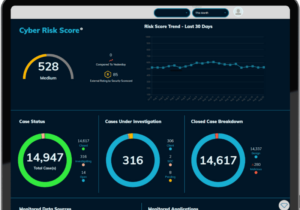Building Back Stronger: Turning a Cyber Attack into a Catalyst for Growth and Resilience
Surviving a cyber attack is a significant event for any business. It can leave you feeling vulnerable, exposed, and potentially uncertain about the future. However, in the aftermath, you stand at a critical crossroads. You can choose to simply return to your previous state, leaving the vulnerabilities that were exploited unaddressed, or you can seize this experience as a powerful opportunity to learn, adapt, and emerge with a far more robust and resilient security posture.
We believe that every challenge presents an opportunity for growth. A cyber attack, while undoubtedly painful, can be the catalyst that compels your organisation to take a hard look at its security practices and build back stronger than ever before. Here’s a comprehensive guide on how to do just that:
1. Conduct a Full Post-Incident Review
- Root Cause Analysis: Investigate how the attack began and identify the exploited vulnerabilities in your systems and processes. Understanding the initial entry point is key to prevention.
- Security Gaps: Pinpoint weaknesses in your current security practices and infrastructure that allowed the attack to succeed. This honest assessment is crucial for targeted improvements.
- Response Effectiveness: Analyse how well your incident response plan functioned during the attack. Identify what worked and what needs refinement for future incidents.
2. Upgrade Systems and Policies
- Immediate Patching: Promptly update all vulnerable software, operating systems, and firmware to eliminate known security weaknesses.
- Least Privilege: Re-evaluate and restrict user access to only what is strictly necessary for their job functions, minimising potential damage.
- Remote Access Revision: Strengthen security protocols for VPNs and cloud access, especially if they were involved in the recent incident.
3. Strengthen Employee Training
- Updated Training: Revise your cybersecurity education to address the attack's methods and emphasise practical identification of threats.
- Phishing Simulations: Regularly test employees with realistic scenarios to improve their ability to recognise and report malicious attempts.
- Secure Practices: Reinforce best practices for strong passwords and safe remote work habits to create a more security-conscious workforce.
- Security Culture: Integrate cybersecurity awareness into your company's daily operations, making it a shared responsibility.
4. Enhance Backup and Recovery Strategies
- Regular, Encrypted Backups: Implement frequent and automated backups, ensuring all data is securely encrypted for protection against unauthorised access.
- 3-2-1 Rule Implementation: Maintain three data copies on two different media, with one stored securely off-site or offline for comprehensive protection.
- Recovery Testing: Regularly test your data restoration procedures to ensure quick and effective recovery in the event of future incidents.
5. Invest in Proactive Security Measures
- Advanced Threat Detection: Implement EDR and SIEM systems for real-time monitoring and analysis of potential threats within your environment.
- Threat Intelligence Utilisation: Stay informed about emerging cyber threats and vulnerabilities by leveraging reputable threat intelligence feeds.
- Regular Security Assessments: Conduct routine penetration testing and vulnerability assessments to identify and address weaknesses before attackers exploit them.
Pro Tip: Consider cyber security spending as essential business risk mitigation. The costs of a successful attack far outweigh the investment in proactive prevention and robust recovery plans.
Learning and adapting after a cyber attack is paramount to building a stronger, more resilient business. By focusing on these key areas, you can transform a challenging event into an opportunity for significant security enhancement.
More from this months newsletter:
May 2025 Cybersecurity News Australia: Top Threats, Trends & Enterprise Insights
MAY CYBER NEWS MONTHLY WRAP-UP As May 2025 comes to a close, the cybersecurity landscape […]
Read MorePowerful New Features in Our AI SOC & SOAR Platform
Powerful New Features & Product Enhancements Now Available in our AI-based SOC and SOAR Platform […]
Read MoreAustralia Ransomware Reporting Law 2025: Key Business Obligations
Australia’s New Ransomware Reporting Law Takes Effect: What Your Business Needs to Know As of […]
Read MoreNew SendSafely Outlook Add-in Now Available on Microsoft AppSource
Now Available: The New & Improved SendSafely Outlook Add-in The updated SendSafely Outlook add-in is […]
Read More




